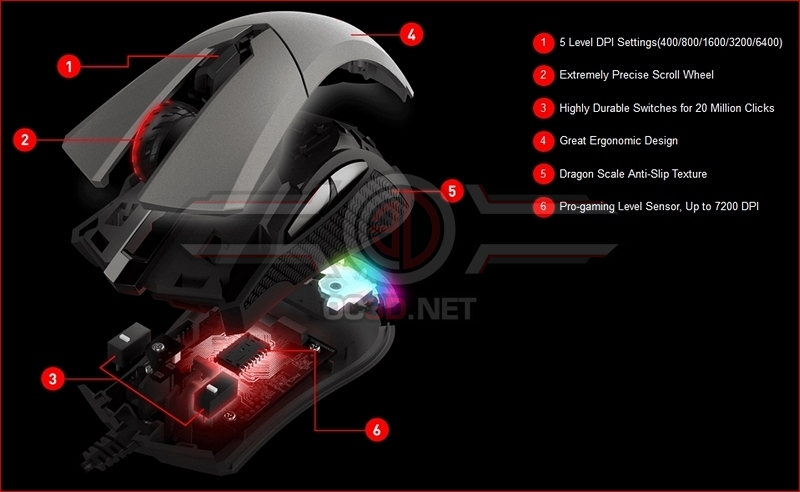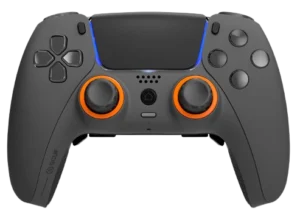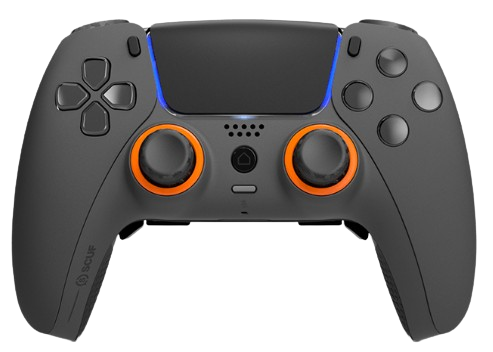The Unseen Complexity: Are Your Gaming Peripherals More Than Just Input Devices?
In the world of PC Gaming, the quest for the perfect setup is a journey without a destination. We, the players, obsess over the minutiae. We debate the merits of optical versus mechanical switches, argue about mouse sensor accuracy down to the single DPI, and scrutinize polling rates that measure response times in fractions of a millisecond. This relentless pursuit of performance has transformed the humble mouse and keyboard from simple input devices into sophisticated pieces of Gaming Hardware. They are no longer just bridges to our digital worlds; they are complex computational devices in their own right, packed with powerful processors, onboard memory, and hyper-sensitive sensors.
This technological arms race, fueled by the demands of Competitive Gaming and the thriving Esports News scene, has given us peripherals of unprecedented capability. However, this complexity introduces a new layer of considerations that extends beyond simple ergonomics and performance. The very components that give a player an edge in FPS Games like Valorant or Call of Duty could potentially be used in ways their designers never intended. This article delves into the unseen technology powering today’s elite Gaming Peripherals, exploring how their advanced capabilities create a new frontier for both performance and potential security vulnerabilities that every member of the Gaming Community should understand.
Deconstructing the Modern Arsenal: What’s Really Inside Your Gear?
To appreciate the dual nature of modern peripherals, we must first look under the hood. The components inside today’s high-end gaming gear are a world away from the simple circuits of a decade ago. They are intricate systems designed for a single purpose: to translate human intent into digital action with zero friction and maximum speed.
Gaming Mice: From Optical Sensors to Onboard Processors
A modern Gaming Mouse is a marvel of engineering. At its heart is an advanced optical or laser sensor, such as those from industry leader PixArt, capable of tracking movement with incredible precision at resolutions exceeding 30,000 DPI (Dots Per Inch). This sensor captures thousands of images of the surface beneath it every second. To process this firehose of data and translate it into smooth cursor movement without lag, the mouse relies on a dedicated microcontroller, often a 32-bit ARM processor—the same class of CPU found in early smartphones. This processor also manages ultra-high polling rates of up to 8000Hz, meaning the mouse reports its position to the computer 8,000 times per second. Furthermore, many mice feature onboard memory to store user profiles, complex macros, and custom lighting settings, allowing a player to take their configuration to any Gaming PC without needing to install software.
Gaming Keyboards: The Rise of the Smart Input Device
Similarly, Gaming Keyboards have evolved far beyond the simple membrane designs of the past. The conversation has moved from mechanical switches to even more advanced technologies like optical or Hall effect switches, which use light beams or magnetic fields to actuate, offering near-instantaneous response times crucial for MOBA Games like League of Legends or Dota 2. To manage features like N-key rollover (allowing every key to be pressed simultaneously and registered correctly) and per-key RGB lighting, these keyboards also contain their own powerful microcontrollers. Some high-end models even include small OLED screens for displaying in-game stats or notifications, further cementing their status as independent smart devices.
Gaming Headsets: The Convergence of Audio and Data

Even Gaming Headsets are now complex audio processing units. Beyond just drivers and a microphone, they often contain their own Digital-to-Analog Converters (DACs), amplifiers, and Digital Signal Processors (DSPs). This onboard Gaming Tech powers features like virtual 7.1 surround sound, active noise cancellation, and advanced microphone processing like Blue VO!CE technology, which cleans up vocal communications in real-time. This processing happens on the device itself before the signal ever reaches the PC, showcasing the distributed computing power present in a modern gamer’s arsenal.
Performance vs. Vulnerability: A Double-Edged Sword
The sophisticated technology embedded within these peripherals is unequivocally beneficial for gameplay. It provides the responsiveness and accuracy demanded by the fast-paced action of a Battle Royale like Fortnite or Apex Legends. However, every sensor and processor represents a potential vector that could be used for more than just gaming.
How Advanced Sensors Elevate Gameplay
In Competitive Gaming, milliseconds matter. A high-DPI, high-polling-rate mouse ensures that a player’s flick-shot in Counter-Strike is translated to the screen with perfect fidelity. A keyboard with optical switches ensures that a crucial ability in Overwatch is activated the instant the key is pressed. This pursuit of minimal latency is the primary driver of peripheral innovation. The goal is to create a seamless connection between the player and the game, and the advanced hardware inside is what makes this possible. This is a constant topic in Gaming News and a key selling point for manufacturers targeting the esports market.
The Unforeseen Side-Channel: When Sensors Hear More Than Clicks
Herein lies the fascinating and slightly unsettling reality: these hyper-sensitive components can detect more than they were designed for. Consider the accelerometer found in some high-end mice for detecting lift-off distance. It is designed to measure minute changes in motion and orientation. In theory, this same sensor could also detect microscopic vibrations traveling through the desk it sits on. Where might these vibrations come from? Sound waves—specifically, the sound of your voice.
This creates a theoretical “side-channel attack.” A piece of sophisticated, malicious software—perhaps a compromised driver or firmware—could potentially repurpose the mouse’s sensor to act as a crude listening device. By analyzing the patterns of these tiny vibrations, an advanced AI or machine learning model could reconstruct the speech that caused them. This is not a simple “plug-and-spy” operation; it would require significant technical expertise and malicious code operating at a deep level of the system. However, it illustrates a fundamental principle: when you place a highly sensitive sensor on a surface, it has the potential to measure all forces acting upon that surface, not just the ones you intend for it to measure. This moves the discussion about Gaming Peripherals from a simple consumer tech topic to one with genuine security implications.
The Gaming Ecosystem as a Security Frontier
The potential for acoustic snooping via a mouse sensor is an extreme and complex example, but it highlights a broader issue. The entire ecosystem of gaming hardware and software, from Game Controllers and Racing Wheels to the drivers that run them, represents a vast and often overlooked attack surface.

Firmware and Driver Vulnerabilities
Every smart peripheral runs its own internal software, known as firmware. Just like any other software, firmware can have bugs and security holes. An attacker could potentially craft a malicious firmware update that, once installed, turns the device into a keylogger or a tool for further system intrusion. Because firmware is stored on the device itself, this kind of malware can be incredibly persistent, surviving operating system reinstalls.
Device drivers are an even more attractive target. To communicate directly with the hardware, drivers operate with high-level privileges within the operating system’s kernel. A vulnerability exploited in a mouse or keyboard driver could give an attacker complete control over the entire Gaming PC. Imagine downloading a seemingly harmless third-party tool promising to “optimize” your mouse for Valorant. If that tool contains a malicious driver, it could compromise your system, steal credentials for your Steam or Epic Games accounts, and monitor all your activity.
The Threat of Malicious Macros and Onboard Memory
The macro functionality and onboard memory of modern peripherals also present a risk. While incredibly useful for executing complex command sequences in an MMORPG or a strategy game, macros can be programmed to do anything a user can. A malicious macro shared on a forum could, when executed, open a command prompt, download and run malware, or delete system files. The onboard memory could also be used to create a hardware “Trojan horse.” An attacker could load a malicious payload onto a mouse’s memory, and the moment it’s plugged into a new computer, an autorun-style macro could execute that payload, bypassing traditional network security measures.
Securing Your Setup: Best Practices for the Modern Gamer

While these threats sound alarming, it’s important to maintain perspective. The likelihood of your mouse being used to eavesdrop on you is extremely low. However, practicing good digital hygiene is crucial in an increasingly complex technological landscape. The principles that keep your Gaming Laptop or PC secure also apply to the peripherals connected to it.
Practical Steps for Mitigation
Source Your Software Carefully: Always download drivers, firmware updaters, and configuration software directly from the official manufacturer’s website. Avoid third-party download sites or unverified tools.
Keep Firmware Updated: Manufacturers periodically release firmware updates that can include performance improvements and critical security patches. Check for updates regularly.
Scrutinize Third-Party Tools: Be extremely cautious with any software that claims to “optimize” or “enhance” your peripherals, especially from unknown developers. These are common vectors for malware.
Beware of Untrusted Macros: Do not import or run macros from sources you do not explicitly trust. A macro is a script, and it should be treated with the same caution as any executable file.
Use Robust Endpoint Security: A reputable antivirus and anti-malware solution is your first line of defense. It can often detect and block malicious drivers or software before they can do harm.
The Future of Peripheral Technology and Security
As the Gaming Industry continues to push the boundaries of Gaming Tech, peripherals will only become more powerful. We may see biometric sensors integrated into mice, more complex onboard processing for AI-driven features, and deeper integration with games developed in Unreal Engine or Unity. With this innovation comes a greater responsibility for manufacturers to adopt a security-first design philosophy. Just as software developers have embraced secure coding practices, hardware makers must increasingly think like security researchers, anticipating and mitigating potential vulnerabilities before their products ever reach the market.
Conclusion: Victory Through Vigilance
Our Gaming Peripherals are no longer simple tools; they are sophisticated, high-performance extensions of our will in the digital realm. The incredible technology packed into a modern Gaming Mouse, keyboard, or headset allows for a level of precision and immersion that was science fiction just a generation ago. This same complexity, however, brings with it a new set of responsibilities for the user. Understanding that these devices are powerful computers in their own right is the first step. By appreciating the technology and practicing sensible security habits—sourcing software carefully, keeping firmware updated, and being wary of untrusted add-ons—we can ensure our high-tech gear remains a trusted ally. In the end, the goal is to leverage this amazing technology for victory in our favorite Video Games, not to open a door to vulnerability.













